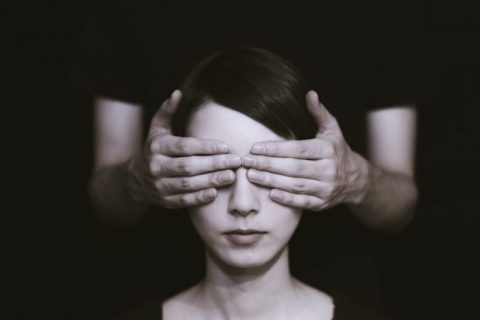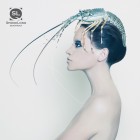Finish this sentence: Before I started writing stories …
… I picked roly-polies out of pieces of dead wood in our garden and placed them in glass jars, then watched them wobble on the walls, wondered what kind of music they like, occasionally fell on top of them, and scarred my leg with their slivers.
I read the story several times. Each time I discovered something different, something so emotionally taxing I felt the need to pause to shake the energy building in my body, the tears forming in my eyes. I wonder, then, if you thought about how your readers might respond to your story. Was it your plan to invoke an emotional response?
Ah, so happy to hear it made you feel so much! I don’t work in second person all that often, but this story felt best served by making “you” the main character, because it’s so concerned with the experience of exchanging emotions with someone in a relationship, and it lent itself to mimicking that kind of intimacy with the reader.
I have a heartfelt hard-on for things that are darkly comedic, and often my writing tends towards that tone. However, the comedy does sometimes get lost a bit on the page. I’ve often had the experience where, after reading a piece in front of an audience, someone will come up to me and say, “I didn’t know that was supposed to be funny!” This phenomenon (is that word too grand? Probably) could also be attributed to the fact that I often gesticulate wildly on stage, but who can say?
I’m very much of the mind that any/all emotional responses to a piece are “correct,” and I always hope that, no matter my original intention, there will be a few unexpected reactions. Having said that, my intention was to evoke simultaneously the desperation of longing for someone you know is no good for you and the comedy that comes (after the fact) from doing the things one does when one longs desperately for someone that is no good for them.
I am swooning over the cadence in the lines and the cognitive leaps the story takes. How did this become a story? Is it fair to ask why it isn’t a poem?
Currently swooning over your swooning. This story grew out of a dream (nightmare?) I had about being attached to my crush through a physical umbilical cord. I didn’t write about it when it happened, but the image and the feeling of revulsion after waking up to find myself attached to someone else (please excuse my obvious fear of intimacy!) stuck with me for years. Recently, I’ve been reading a bit of nonfiction on technology and its effect on dating and relationships, and I remembered the dream/ thought it was a pretty apt metaphor for the digital tether that increasingly binds us to other people. Alisa Nutting’s latest novel Made to Love was also a big influence.
I love writing that exists in a liminal space between poetry and fiction. Some of the authors I love most (Lauren Groff, Carmen Maria Machado) have this way of packing their fiction like a jewelry box with these dazzling images that make you want to sit with a single page the way that you linger on a line in a poem. I write a fair amount of poetry too, but I usually find that the only difference between my poetry and fiction is the way it’s presented on the page. I try to be just as careful about the sounds and the images in both.
There is concrete language in the story that link the speaker and the lover to specific places (Dallas and Connecticut), and yet I still feel like these places are not concrete. The opening gives me a New York City vibe. The Piggly Wiggly reminds me of the rural South (I think I saw my first Piggly Wiggly in LaGrange, Georgia). What is the role of place in your story? Does place create a meta-story?
I imagined the cord literally stretching from one city to the other and loved conjuring up the images of what people inside the cities in between/outside of this relationship might make of the cord (laundry line being a big/obvious one). NYC was definitely on my mind in the opening. I like to think that the cord not only stretches the expanse between the characters’ two respective cities, but that it gets caught up in any incidental places where they might have met to hook up, so you have this complicated tangle of places that’s similar to the complicated tangle of memories you have at the end of a relationship—like weekends in cities that aren’t your own. I think, too, even the cities I placed these characters in are incidental, just the placeholder cities of your youth. I am from the South, though, and could not resist the very specific Piggly Wiggly shirt, which I remember people wearing ironically (maybe?) in high school.
I almost don’t want to ask, but I can’t resist the urge: What’s the significance of the color red? Is it just a visual representation of love, or is there something more you’re trying to get at?
I wrote this story around Christmas time, so I imagined it being lit (not literally but maybe tonally) with the kind of a red glow of a sixties tiki bar or the movie Gremlins. But, of course, I also saw it pulsating with the stereotypical color we associate with love/passion/extreme feelings. I thought it paired well with this fleshier expression of love, conjuring up images of blood/sex/birth. I like the idea of the color red pulsing through the cord every time our two characters want to fuck, a personal “code red,” a code word of sorts that’s either more or less personal than the proverbial “You up?” text.



 The core workshop of SmokeLong Fitness is all in writing, so you can take part from anywhere at anytime. We are excited about creating a supportive, consistent and structured environment for flash writers to work on their craft in a community. We are thrilled and proud to say that our workshop participants have won, placed, or been listed in every major flash competition. Community works.
The core workshop of SmokeLong Fitness is all in writing, so you can take part from anywhere at anytime. We are excited about creating a supportive, consistent and structured environment for flash writers to work on their craft in a community. We are thrilled and proud to say that our workshop participants have won, placed, or been listed in every major flash competition. Community works.